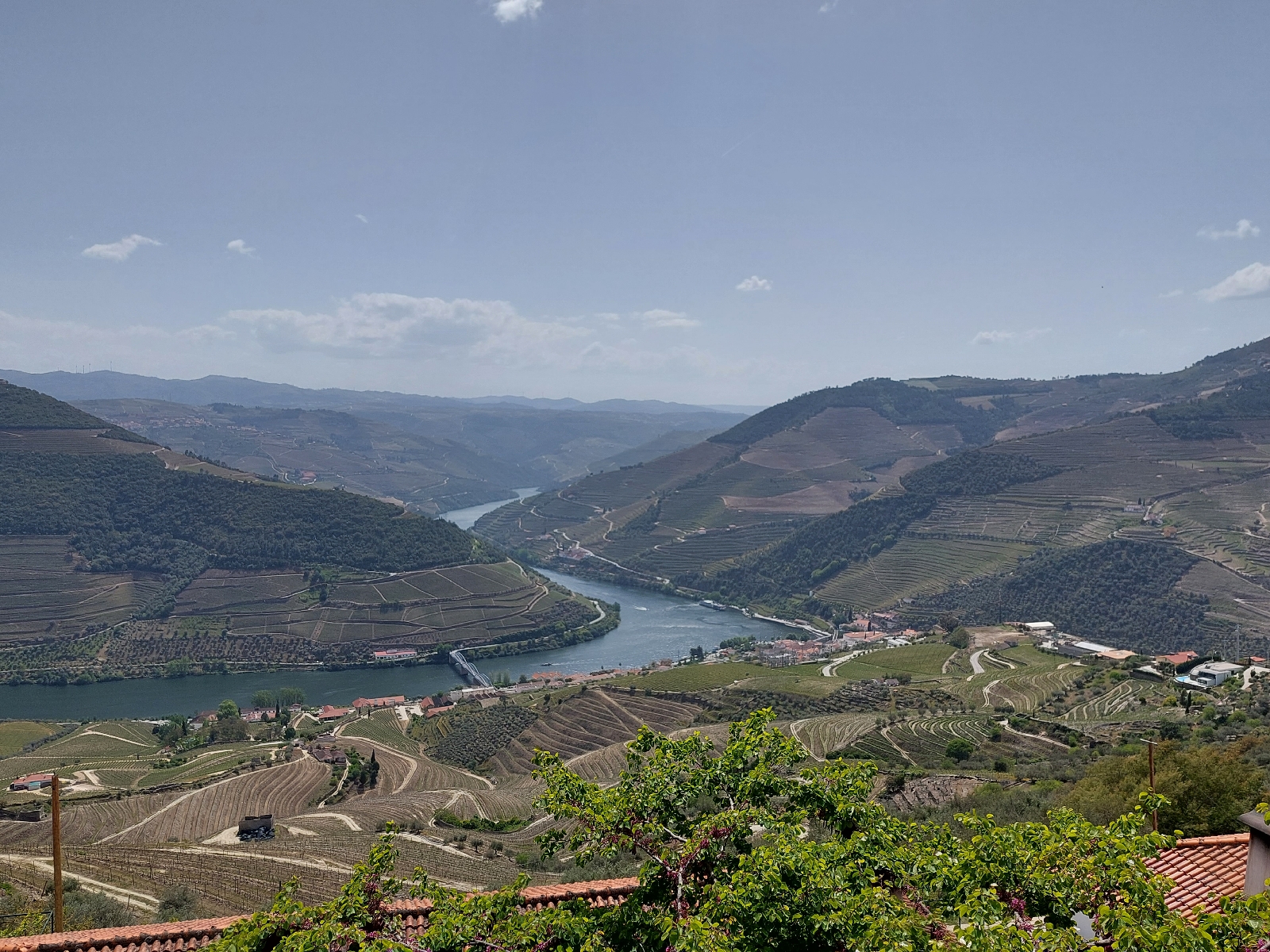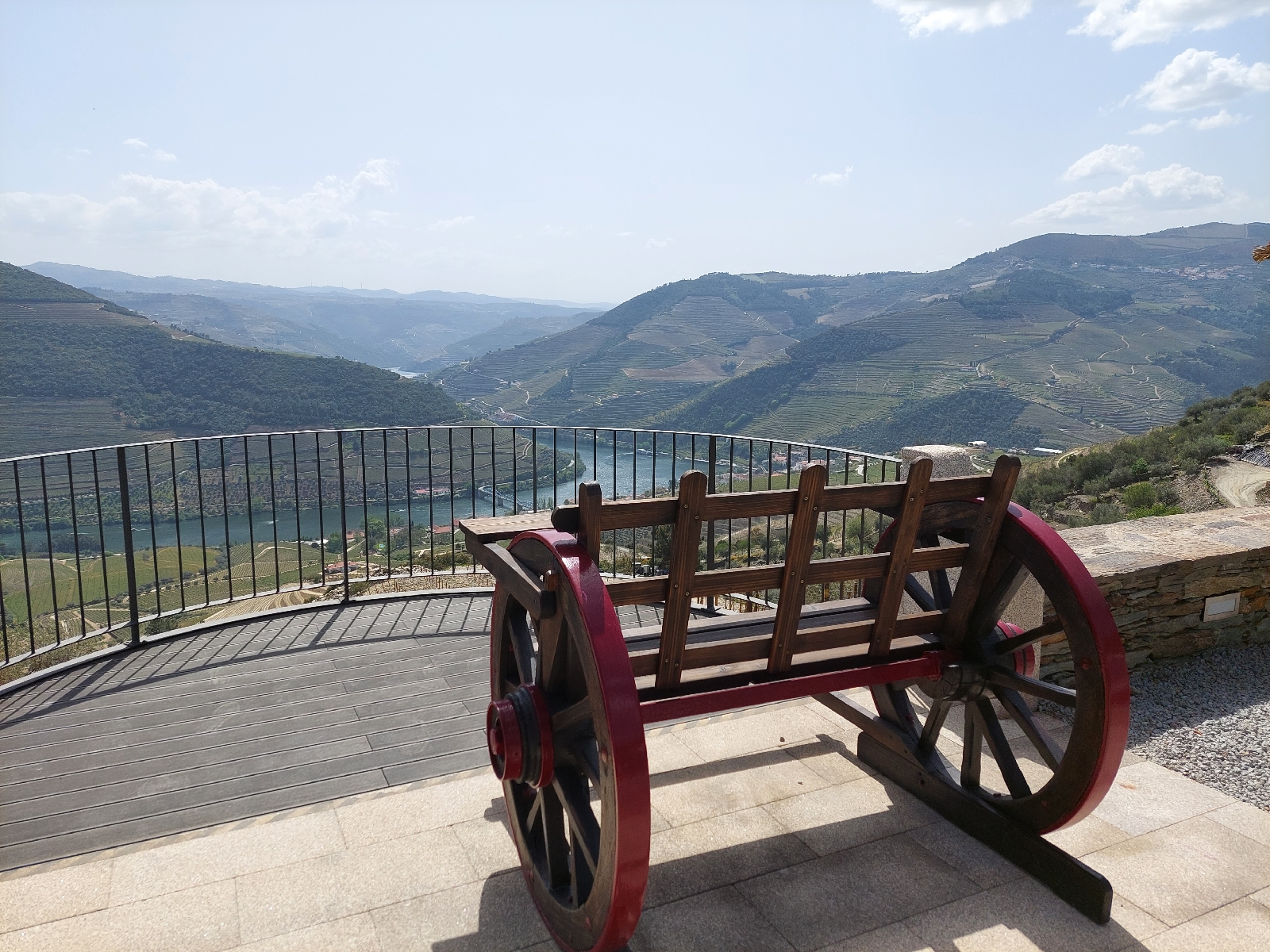One guide compared Fado to the blues because much of the subject matter is similar. But there are happy songs too. At this performance, they said it is the music of the working class. It's been banned more than once for protest music. It concentrates on emotions more than lyrics. It may also be compared to bluegrass but it's definitely a unique style.
The instruments usually played are one classical guitar and one 12 string Portuguese guitar. There are two styles, the Coimbra and Lisboa. Coimbra is a university city we visited on the drive back to Lisbon. They have distinct timbres but either can be used for Fado.
There was a time when only men sang Fado but now females are also allowed and the singer we heard was a woman from the Duoro Valley. She gave a phenomenal performance. They explained to us that the musicians have to be able to play the traditional songs in 12 keys. The singer will come on stage, tell the guitarists the song and the key they want and the guitarists must immediately begin playing when the singer gives a signal. They must also read the face of the singer to know when they are about to stop singing to create a smooth ending to the song.
The guitarists were father and son. They were excellent.
We began the last day by getting covid tests at 9. The test cost 15 euros and we had the results--all negative--before we were picked up at 10.
On the way to the airport, we stopped at Portugal's 3rd largest city, Coimbra. The city is divided into two parts--the upper part and lower part. The university is on the upper part. The university was founded in 1290, one of the oldest and most prestigious in Europe. The main square has a beautiful view of the city and the Mondego River. There is a mix of buildings around the square--some of the oldest, most beautiful across from block buildings built under the fascist regimes.
Clerigos Tower
There are two buildings you have to schedule and pay for to tour. One is the beautiful Baroque chapel, Saint Michael's. It's very small but there are still services held there and it's where many students choose to get married. It dates back to the 16th century.
The Ceiling of St. Michael's'
The Library still houses 70,000 books from the 16th, 17th and 18th centuries which researchers and students are allowed to access with permission. One of the oldest is a Latin Bible from 1462. No picture taking is allowed on the upper floors of the library. The tables and bookcases are made of oakwood which is dense and has a scent that repels insects. There is also a small colony of bats that are essential to the preservation of the library because they eat the insects that could damage the books. However, bats are messy so the tops of the wood are coated so they can be easily cleaned. At night, an attendant covers all exposed wood with leather towels.
Joanina Library
The main salon is built similar to a chapel with a picture of King John V who ordered the library built in the 1700s. We weren't allowed to take pictures but someone on the internet was so I took theirs.
The last place we visited was the abandoned Monastery Santa Clara. It was built in the 17th and 18th centuries. Frequent flooding has caused the buildings to be abandoned but renovation is currently taking place. Saint Elizabeth who was also a queen of Portugal. When her husband, King Denis died, she lived in this monastery until her death.
From the site of the monastery, there's a great view of the Mondego River and the city of Coimbra.
We spent the last night in an airport hotel, and after a grueling day of travel, arrived home on May 5.

























































